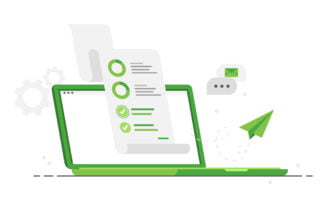So far in 2016, we’ve heard a lot about Big Data, the Internet of Things, and the hottest new marketing technique on the block: ‘hyper-personalised’ marketing. Marketers are increasingly interested in focusing their efforts on individuals, not database segments, because that all-important personal attention is shown to increase engagement, inspire customer loyalty and deliver a more targeted message.
So far in 2016, we’ve heard a lot about Big Data, the Internet of Things, and the hottest new marketing technique on the block: ‘hyper-personalised’ marketing. Marketers are increasingly interested in focusing their efforts on individuals, not database segments, because that all-important personal attention is shown to increase engagement, inspire customer loyalty and deliver a more targeted message.
To hyper-personalize down to an individual level, we ironically need massive amounts of data. We need to follow the buyer’s journey, and the technology we use must be able to track them across different devices. This is a highly sophisticated form of marketing that relies on the accurate, real-time processing of data, which is why quality is so important in making those split-second decisions.
2016 is an important year for marketing. It’s the year where guesswork and approximation are being consigned to the recycle bin forever. For the first time, the sales and marketing department are being driven closer to functioning as one unit, sharing clean, meaningful and timely data to understand what their buyers want and need.
Sales, meet marketing
We often see sales and marketing as two very separate departments. Traditionally, they have been separated by task, but also by time.
The marketing department has an educating function, while the sales department is there to close the deal at the right time. But there is a common thread: both departments contribute to the nurturing process.
Data is changing the way we nurture a lead and close a deal, because marketers are reacting more quickly to consumer behaviour. As such, the time delay between marketing activity and sales activity is closing.
Sales and marketing need to be absolutely aligned in what they are trying to achieve, and that means a combined and continuous focus on the quality of the data they share.
Why personalisation matters
Businesses know that marketing is most effective when the customer is directly targeted with a message. That’s why travelling salesmen have been used to demonstrate products for many years.
Hyper-personalisation is the logical evolution of this process, but on a much larger scale.
Thanks to the abundance of data flowing in from numerous sources, we know both existing and prospective customers more intimately than ever. We can follow their movements across a website, and we can see when they jump onto their phones or tablets to conduct additional research.
Hyper-personalisation is an evolution from ‘regular’ personalisation, because it relies so heavily on data.Now that we can pool data from different sources, and cleanse and manage that data very quickly, we can see where customers are open to engagement, which means content and messages are more likely to strike the right tone at the right time.
The key message here is that the business is actively listening, and is ready to respond quickly and accurately. It’s gathering data from social media, from support and from website analytics, and the quality of that data is critical to results.
Data: the missing link
We already know that a clean CRM is a boon to any business, as it holds accurate and timely data that every department can use. As departments become more reliant on data, the CRM becomes more important.
If you’re going to rely on data to make real-time sales and marketing decisions, particularly with activities like hyper-personalisation, you need that data to stand up to scrutiny at any given moment. If data is unclean, out of date, duplicated or otherwise unreliable, hyper-personalisation becomes something of a pipedream.
It’s almost impossible to deliver a relevant message if you’re basing your messaging on incorrect data. Equally, it’s impossible to align sales and marketing activities productively, and in real time. That’s why it’s essential to put some kind of safeguard in place, whether that’s data quality software, or a Chief Data Officer that is responsible for prioritising data as an asset across the business.
Improving sales and marketing ROI
Our increased focus on data in business can help to improve ROI. Targeting existing customers is a very good way to achieve this, and it proves just how critical data is in that process.
When we delve into accurate data held within our CRM, we can market to people that we already know. Hyper-personalisation lets us track those people across social channels, websites and even in retail stores, so we have a huge amount of insight into what they want. We can then increase spend per customer, and engage that customer for repeat purchases, which is a lot cheaper than converting new customers. A loyalty programme can boost engagement even further.
Even when we look at brand new, fresh leads, sales and marketing are now able to combine their efforts to leverage data in a much more effective way. This may mean:
It’s time for a data revolution
Many businesses see data quality as a slightly nebulous thing, or an improvement that would be welcome but is not yet a budget priority. Some businesses expect that data quality will somehow remedy itself.
But as sales and marketing become more reliant on data, there’s an urgent need for quality.
If we are to bring these functions together, and improve the way they work with shared data, we simply cannot expect them to use data that is not fit for purpose. Data quality has always underpinned accurate and timely decision making, and as hyper-personalisation takes hold, the need for real-time data cleansing is greater than ever.







